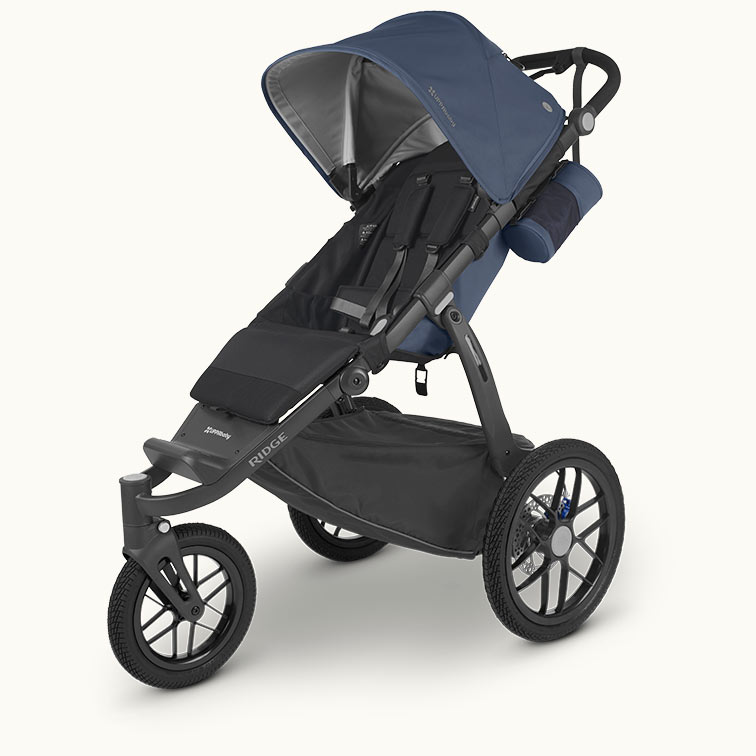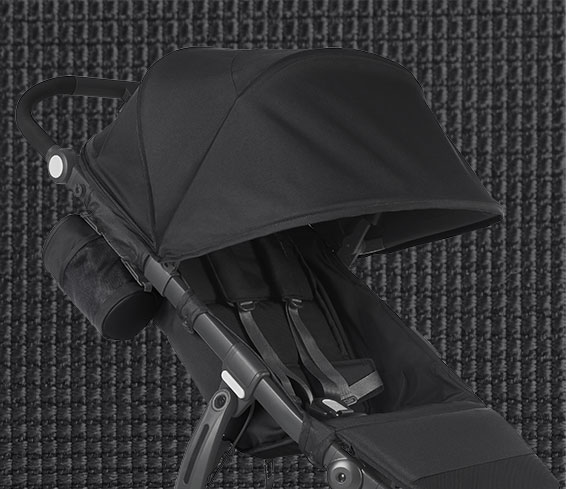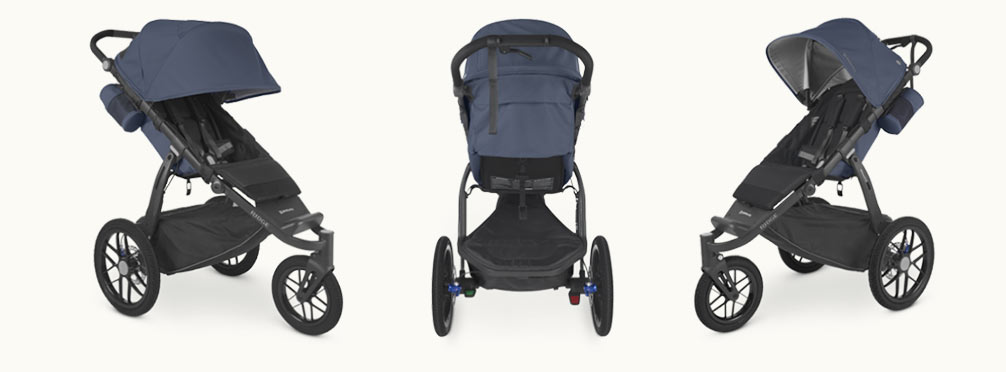
Paseos sin limitaciones.™
Construido para brindar un alto rendimiento, con el Ridge todoterreno se recorren más lugares, a cualquier ritmo. Las funciones inteligentes y ajustables mantienen al conductor y al pasajero cómodos, ya sea que su recorrido incluya pasos por adoquines o bosques. Con un diseño refinado, pero duradero, el Ridge ofrece nuevos horizontes por explorar.
Construido para brindar un alto rendimiento
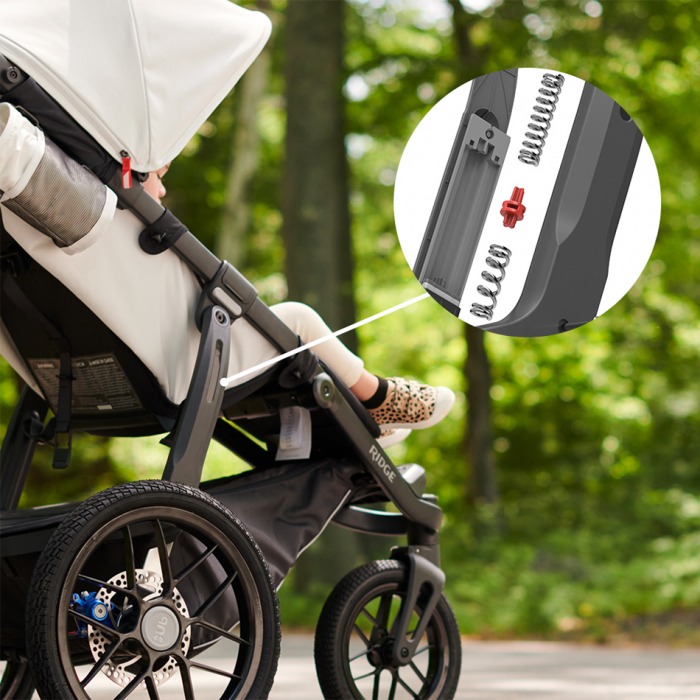
Suspensión de respuesta avanzada con un sistema patentado de dos etapas
Un sistema de suspensión con alta capacidad de respuesta que incluye resortes helicoidales variables que mantienen cómodos a los pasajeros en cualquier tipo de terreno, sin importar el peso del niño.
Ruedas antipinchazos
Con estas ruedas que no necesitan inflado, puedes sacar y dejar el inflador en casa. Las ruedas grandes de 30,5 and 40,6 cm pulgadas con una banda de rodadura profunda brindan una conducción suave sobre cualquier tipo de terreno.
Sistema de freno de mano a disco
Freno de mano que ofrece un rendimiento fiable para reducir la velocidad de desplazamiento, incluso en pendientes.
Frena con tranquilidad, sigue con calma
Pedal rojo para frenar. Pedal verde para desplazarse. Ambos sistemas son tan sencillos de usar como de ver.
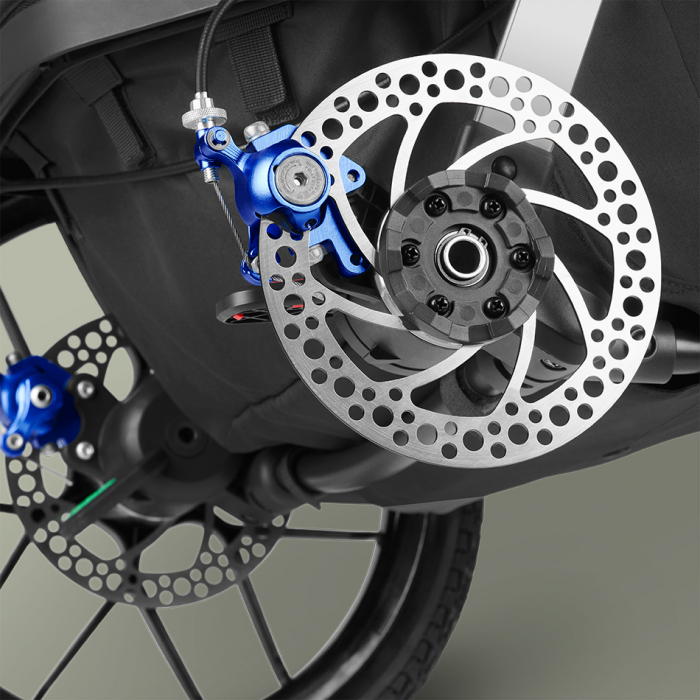
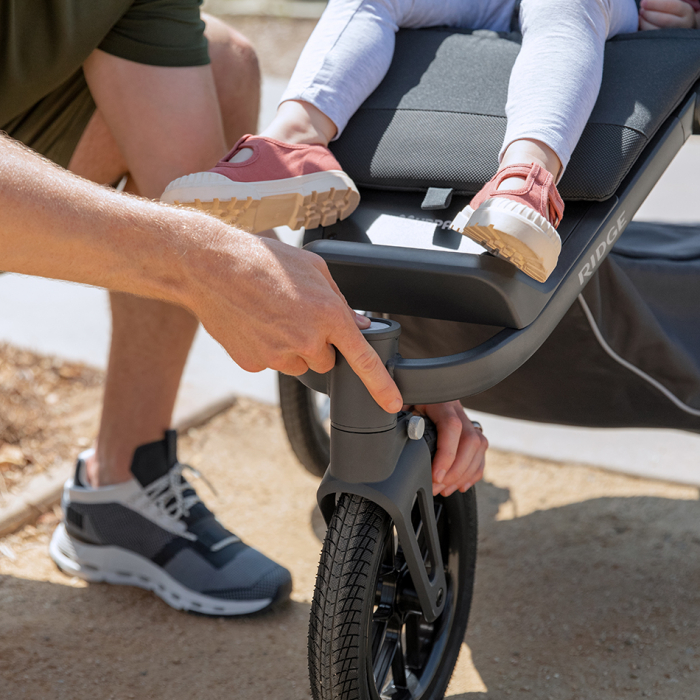
Rueda delantera con bloqueo giratorio
Cuando las condiciones del terreno lo requieran, bloquea la rueda delantera con solo presionar un botón. Un indicador visual confirma el modo y el detector de movimiento ajustable permite un ajuste fino de la alineación de las ruedas, a fin de realizar un paseo sin sobresaltos ni oscilaciones de dirección.
ENGINEERED FOR COMFORT
Tú empujas. Ellos se relajan.
Un asiento profundo y acolchado que mantiene seguro al niño y en una posición cómoda. El reclinación cambia rápidamente la posición de los pequeños pasajeros de paseo a descanso.
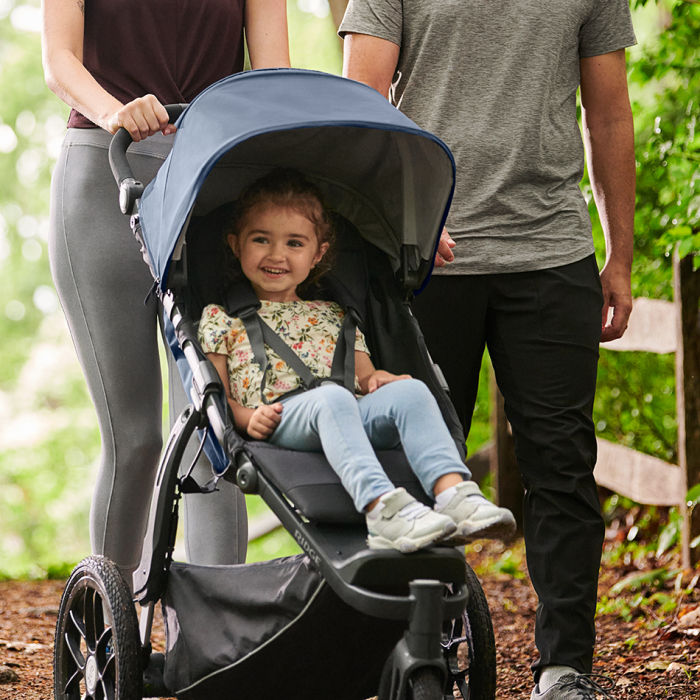
Manillar de 4 posiciones
Se puede ajustar en 4 posiciones diferentes de flexión de codo, a fin de lograr una comodidad de empuje más precisa.
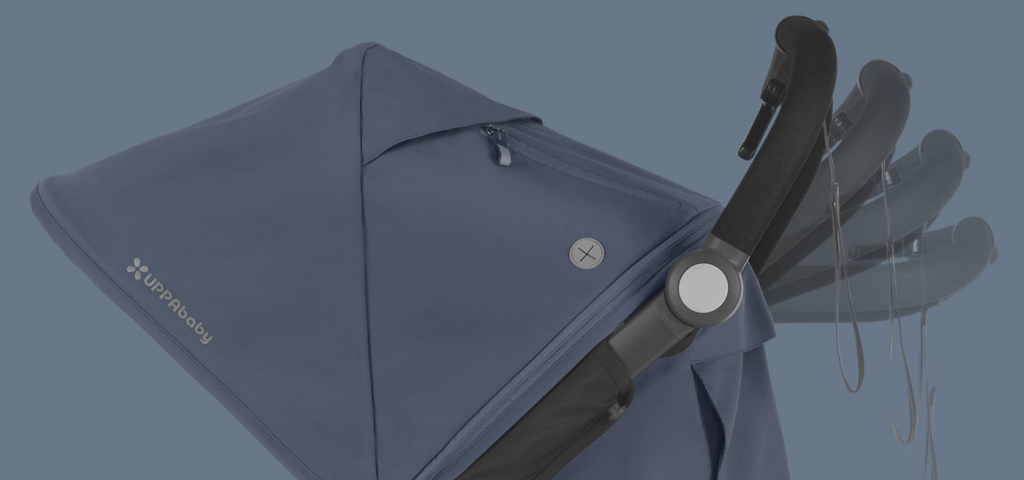
Explore con facilidad

Diseñado para brindar sombra
Con un rápido despliegue, la capota se extiende para brindar sombra de protección y bloquear las distracciones de la siesta. Mira a tu pasajero a través de la ventanilla de visualización superior o deja la solapa abierta para un mayor flujo de aire. Mantén los elementos esenciales más pequeños (¡Hola, teléfono!) seguros y al alcance de la mano en un bolsillo con cierre convenientemente ubicado.
Plegado con solo una mano
Todo el carrito se pliega fácil y rápidamente con un simple empujón y movimiento de la mano. Además, se sostiene por sí mismo cuando está plegado.
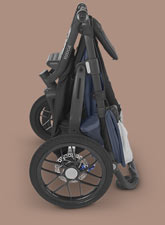
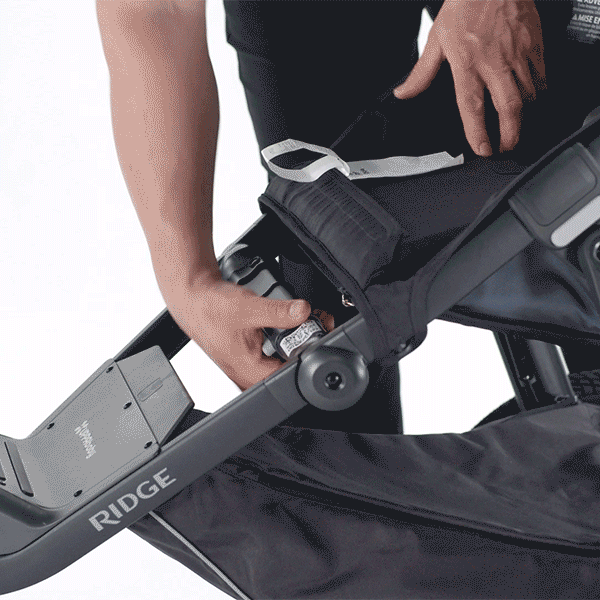
Dirección de empuje hacia el frente
Opciones para recién nacidos y ampliables

Más desde el primer día
Con los adaptadores adicionales nuestro moisés convierte su Ridge en un carrito de bebé.
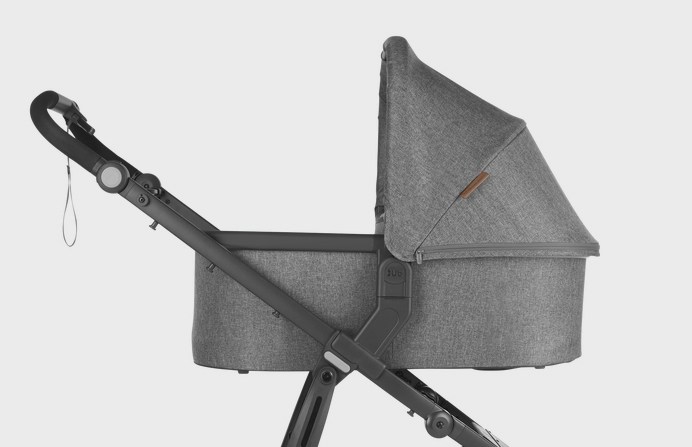
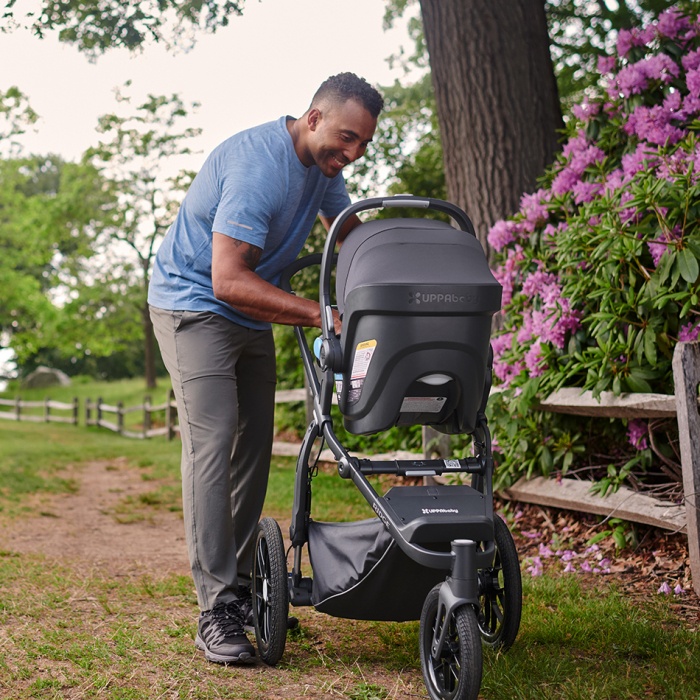
Compatible con Mesa y más
Con los adaptadores adecuados, puedes pasar de conducir a pasear con facilidad con nuestro asiento infantil para automóvil Mesa o sillas para recién nacidos selectas de Maxi-Cosi® y Cybex.
Accesorio patineta PiggyBack
El Ridge también tiene lugar para un segundo niño con accesorio patineta PiggyBack. Ideal para pequeños que caminan y que quizás necesiten un aventón.
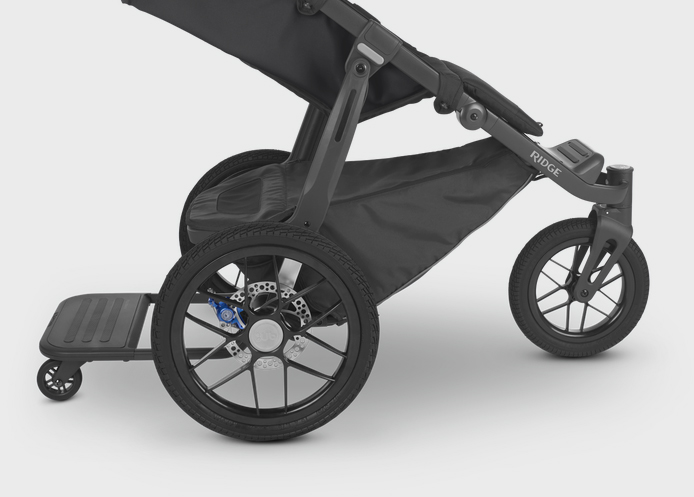
Especificaciones
Adecuado para bebés desde los 6 meses hasta 22 kg
Adecuado para recién nacidos con accesorios aprobados
Adecuado para correr/trotar cuando el niño puede mantener la cabeza erguida sin ayuda.*
*El consumidor debe buscar el consejo de un médico sobre si el niño tiene la edad suficiente para usarlo.
Peso real (incluye capota, ruedas y cesto): 13,2 kg
Abierto: 97,8 L x 66 W x 102,9 H cm
Plegado: 47 L x 66 W x 92,7 H cm
Qué incluye
- Soporte para botella de agua
- Funda de la cesta
- Ruedas antipinchazos de 30,5 y 40,6 cm
Características clave
- Cesta grande con funda incluida
- Ruedas delanteras con bloqueo giratorio y detector de movimiento ajustable
- Ruedas antipinchazos de 30,5 y 40,6 cm
- Plegado con una mano; se sostiene por sí mismo cuando está plegado
- Arnés de cinco puntos con soporte lumbar
- Para recién nacidos, compatible con el moisés, Mesa y otras sillas para recién nacido con adaptadores adicionales
- Toldo extensible con protección UPF 50+, ventanilla de malla y bolsillo con cierre
- Sistema de freno de mano a disco
- Manillar ajustable con correa para la muñeca
- Soporte para botella de agua incluido
- Asiento profundo y cómodo con reclinación por correas
- Detalles reflectantes
